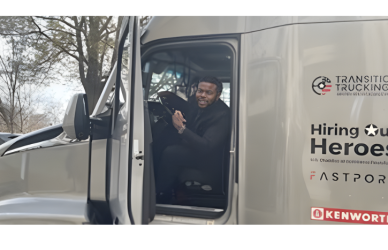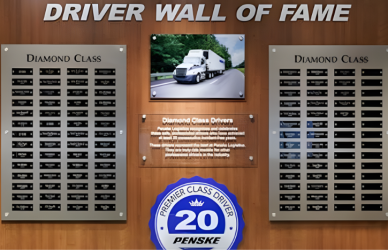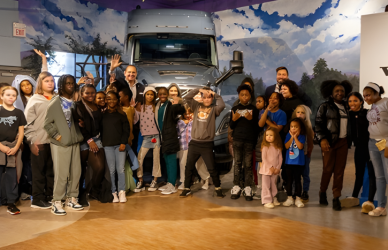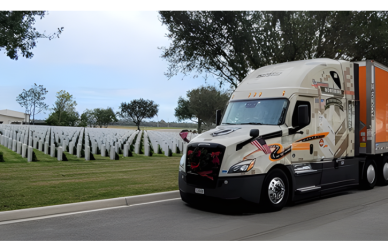Glen Kirk, a seasoned truck driver with over 14 years at Old Dominion Freight Line, recalls the initial surprise of his truck emitting a rumbling sound if he veered too far from the lane.
“The first time it did it, I was like, ‘What the crap was that?’” Kirk said. He was used to being “the only thing in the truck controlling where it went.”
Driver-assistance technologies, including lane departure warnings, collision mitigation, and adaptive cruise control, have become commonplace in the industry, not only for safety but also as a defense against large legal claims.
Penske Logistics, with a fleet of 8,000 trucks and 10,000 drivers, has embraced a comprehensive approach to safety technology. The company accelerated its fleet replacement cycle, ensuring all trucks are equipped with collision mitigation by 2024. The system intervenes if a potential crash is detected, engaging the brake and derating the truck. Adaptive cruise control, maintaining a safe distance from the vehicle in front, has been a staple in Penske’s trucks for years.
Experienced driver Earl Taylor, at Penske since 1997, emphasizes the initial adjustment period to ceding control to technology, likening it to the shift from manual to automatic transmission. Although adaptive cruise control poses challenges, especially in traffic, Taylor acknowledges its overall benefits.
“It seems like every time we recycle our trucks, there’s a new technology,” he said. “There’s a term that truckers use about having a partner in the seat, and it was like a joke at first, but now it’s almost reality.”
Kirk credits collision mitigation for enhancing his safety record, currently boasting 3.5 million accident-free miles.
“If you’re following somebody and they slam on the brakes, the collision mitigation, in my opinion, works faster than the human brain can,” he said. “By the time you see the obstacle, you perceive it in your mind that you need to step on the brakes, and then in the time you step on the brakes, I do believe that the collision mitigation works faster than the human body does.”
However, he highlights the technology’s limitations, particularly in anticipating maneuvers at intersections. He also noted that, as a driver trainer, he’s heard some student drivers feel uncertain about the noises made by the collision mitigation system.
“If you get within one second (of following distance), and I say this honestly, the truck, like, loses its mind,” Kirk said. “The dash starts flashing red. Stop sign comes up on the dash. It just goes berserk because it wants you to get away from the vehicle in front of you.”
Driver acceptance varies, with younger drivers often more receptive to technology, Taylor said.
“I have trained a lot of drivers for new hire and refresher training, and sometimes the new hire training, because of their time in school, is easier than the refresher training,” he said. “Because some guys, they’re set in their ways, they’ve been driving for 20-30 years, and they don’t want to change.” However, he noted, “When drivers notice the benefit, they know that it makes them safer or it gets them home earlier. They buy into it right away.”
Communication and feedback play a crucial role, with companies like C.R. England prioritizing driver input through town hall meetings, podcasts, and a driver road team acting as liaisons. Aaron Shepherd, C.R. England’s vice president of safety and marketing, emphasizes the importance of getting driver feedback.
“I think as a whole, drivers have been very accepting of safety technologies, maybe partially because we really explain what we’re trying to accomplish when we adopt a new technology,” Shepherd said, adding that the fleet is “very methodical” in their approach to implementation. “Our safety culture is we want our drivers and the public to get home safely, and we make investments in technology to help do that. I think our drivers are usually appreciative. In a lot of cases, drivers will bring technological ideas or products they want us to test that would even expand what our current slate of technologies are.”
Concerns about false positives and system reliability have diminished as active safety systems have improved. Ryder Systems, an early adopter of active safety systems, notes increased driver acceptance with improved technology and its integration into passenger vehicles.
Despite these advancements, drivers generally do not express concerns about technology leading to further autonomy in vehicles. Carriers invest in safety technologies to enhance fleet safety, recognizing that technology, while crucial, is not a substitute for a skilled and safe driver.
“The one message I still try to convey to everyone: It doesn’t matter what safety equipment is in the truck,” Kirk said. “Ultimately, a well-rested and alert driver is the safest thing in the vehicle. And if you don’t have that, I don’t think it matters what safety equipment is in the truck, then that’s not a safe vehicle in my opinion.”
Source: Transport Topics











